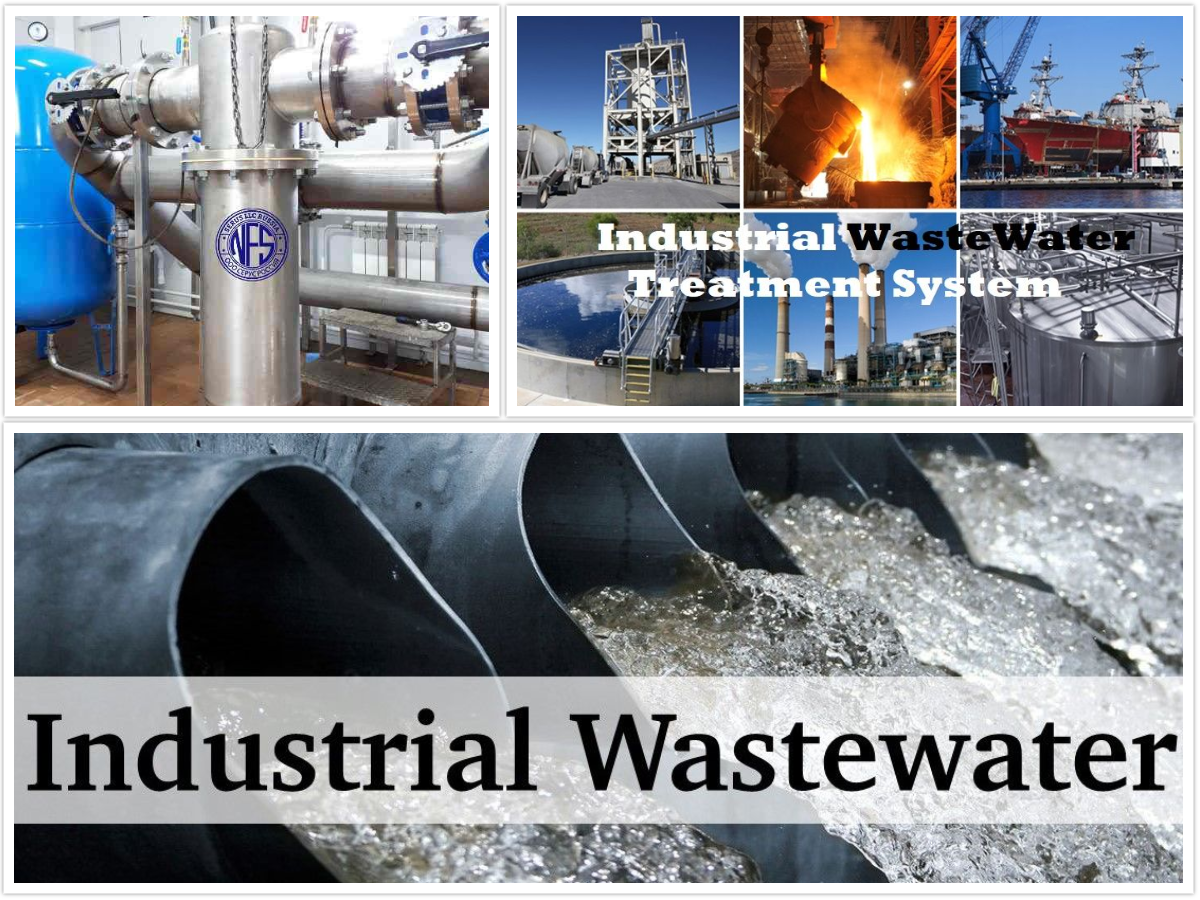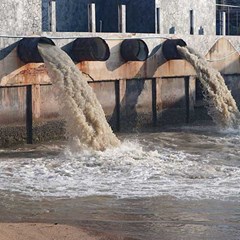Industrial Waste Water Treatment-- Effective Waste Administration for Factories
Industrial Waste Water Treatment-- Effective Waste Administration for Factories
Blog Article
Advancements and Advancements in Hazardous Waste Water Treatment Technologies
The landscape of commercial wastewater therapy is going through a transformative change, driven by advancements that improve both performance and sustainability. As regulative requirements progress, the combination of AI and maker discovering right into wastewater administration systems guarantees to guarantee and improve operations conformity.
Review of Drainage Therapy Technologies
Wastewater treatment technologies encompass a variety of approaches created to eliminate contaminants from commercial effluents prior to their release into the setting. These modern technologies are important for preserving ecological equilibrium and making sure compliance with environmental guidelines. The main categories of wastewater therapy include physical, chemical, and biological approaches, each serving distinct objectives based on the nature of the contaminants existing.

Biological therapy approaches employ microorganisms to break down raw material, making them particularly effective for organic-rich effluents. Methods like triggered sludge and biofilm activators harness the all-natural destruction capabilities of bacteria, resulting in considerable decreases in biochemical oxygen need (FIGURE)
Advanced Purification Strategies
Advanced purification techniques represent a crucial development in the realm of industrial wastewater treatment, enhancing the efficiency of contaminant removal processes. Industrial Waste Water Treatment. These methods incorporate a range of technologies, consisting of microfiltration, ultrafiltration, nanofiltration, and turn around osmosis, which give consecutive obstacles for different bit sizes and chemical structures
Microfiltration and ultrafiltration utilize membrane systems to get rid of put on hold solids, germs, and larger organic molecules, boosting the top quality of effluent previous to additional treatment. Nanofiltration bridges the void in between ultrafiltration and reverse osmosis, efficiently removing organic compounds and divalent ions, hence lowering the lots on downstream processes.
Reverse osmosis provides the highest degree of filtration by enabling only water and tiny particles to pass through its semi-permeable membranes, making it excellent for redeeming top notch water from industrial effluents. Current innovations in membrane technology, consisting of the advancement of even more fouling-resistant and resilient products, have considerably boosted operational efficiency and minimized costs.
Including these sophisticated filtration methods not only improves the overall therapy process however also adds to sustainability initiatives by allowing water reuse and source healing in commercial settings. (Industrial Waste Water Treatment)
Organic Treatment Advancements

Furthermore, the growth of engineered biological systems, such as membrane layer bioreactors (MBRs), combines organic treatment with advanced membrane layer filtration. This assimilation enables for higher effluent high quality and reduced impact, making it appropriate for space-constrained commercial facilities. Technologies in genetically engineered microorganisms have also emerged, boosting the biodegradation of certain contaminants, such as pharmaceuticals and heavy steels, that are traditionally testing to remove.
Furthermore, the implementation of bioaugmentation approaches, where useful microbes are introduced to boost the existing biological therapy processes, has actually shown encouraging lead to enhancing therapy performance. These technologies collectively symbolize a trend towards even more reliable and lasting biological therapy approaches that can adjust to the evolving complexities of industrial wastewater streams. As sectors remain to prioritize ecological conformity, these organic developments will certainly play a critical function in wastewater administration.

Source Healing Methods
In commercial settings, the assimilation of resource recuperation techniques has ended up being increasingly essential for improving sustainability and minimizing waste. These approaches concentrate on removing important products and energy from wastewater streams, therefore transforming possible pollutants right into reusable sources.
One prominent technique is nutrient healing, where nitrogen and phosphorus, frequently existing over click to investigate in wastewater, are caught and exchanged plant foods. This not just decreases environmental effects but likewise offers a round economic climate service for farming applications. Additionally, innovations such as anaerobic food digestion permit the conversion of organic waste right into biogas, a renewable resource resource that can offset nonrenewable fuel source usage in commercial procedures.
Moreover, advanced filtration and membrane layer technologies help with the recuperation of commercial by-products such as salts and steels. These recouped products can be rehabilitated into production processes, minimizing the demand for virgin sources.
Future Fads in Waste Water Management
As markets progressively focus on sustainability, the future of wastewater administration is readied to undertake substantial transformations. Technological developments, such as expert system and maker understanding, will certainly make it possible for extra reliable surveillance and monitoring of wastewater systems. These modern technologies can forecast upkeep demands, maximize therapy processes, and improve decision-making, ultimately decreasing operational costs and ecological influence.
In addition, the combination of circular economic climate principles will play a crucial duty in wastewater monitoring. Industries are anticipated learn the facts here now to move towards systems that not just deal with wastewater however also recover beneficial sources, such as nutrients, water, and energy. This transition will certainly lessen waste and promote the reuse of materials, straightening with international sustainability goals.
Emerging therapy methods, such as membrane bioreactors and advanced oxidation procedures, will certainly even more enhance the performance of wastewater therapy, enabling higher quality effluents ideal for reuse. Furthermore, regulatory structures are likely to advance, highlighting stricter criteria for wastewater discharge and encouraging industries to embrace innovative therapy services.
Verdict
In final thought, the evolution of commercial wastewater treatment modern technologies demonstrates a substantial shift in the direction of enhanced performance and sustainability. Developments in innovative filtering techniques, biological therapies, and resource recuperation methods highlight the sector's commitment to environmental stewardship. The assimilation of synthetic knowledge and device understanding even more maximizes these processes, making sure governing compliance and promoting a round economy. Continued innovations in these areas will play a vital role fit the future of wastewater monitoring and protecting important water sources.
The landscape of industrial wastewater treatment is undergoing a transformative shift, driven by advancements that improve both efficiency and sustainability.Wastewater therapy modern technologies encompass a range of methods designed to remove contaminants from industrial effluents before their release right into the setting.Harnessing the power of organic procedures has actually led to substantial technologies in the therapy of commercial wastewater.Furthermore, the application of bioaugmentation techniques, where useful microorganisms are introduced to enhance the existing organic therapy processes, has shown encouraging outcomes in enhancing treatment performance. These innovations jointly symbolize a fad in the direction of more reliable and lasting biological therapy techniques that can adapt to the progressing intricacies of industrial wastewater streams.
Report this page